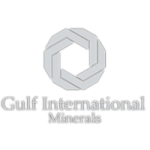Initial estimates related to the porphyry style mineralisation at Magura Neagra have indicated an exploration target (non JORC compliant) of up to 3,000Mt of ore to a depth of 600m, at grades up to 0.8% Cu & 0.5g/t Au”
Piciorul Zimbrului & Magura Neagra are known collectively as Zagra.
Magura Neagra
The 21km2 Magura Neagra prospecting Permit is located in the Zagra-Telciu area in Bistrita-Nasaud County of Romania and lies adjacent to Vast’s Piciorul Zimbrului licence.
Historical prospecting activities undertaken by the state exploration company IPEG Cluj during the period 1986-1993, identified five polymetallic veins ranging in widths from 0.30m-5.00m, together with an 800-metre-long zone of disseminated sulphide mineralisation which was intersected in an underground drive accessed by means of a surface adit (Gallery 47). The underground drives are developed from elevations ranging between 972m amsl-1,340m amsl representing a vertical extent or exposure of 368m.
A spatial analysis of the vein system, areas of intense silicification and occurrences of disseminated mineralisation may indicate the possible presence of a porphyry copper type mineralising system together with mineralised veins containing gold, silver, molybdenum, lead and zinc.
Porphyry style copper mineralisation appears to be associated with the vein systems, and with areas of intensely silicified sandstones with disseminated sulphide impregnations. Initial estimates, by the Romanian state exploration company IPEG Cluj, related to the porphyry style mineralisation, have indicated an exploration target (non-JORC compliant) of up to 3,000Mt of ore to a depth of 600m, at grades ranging from 0.4% copper (“Cu”) and 0.3g/t gold (“Au”) up to 0.8% Cu and 0.5g/t Au.
Piciorul Zimbrului
The 10km2 Piciorul Zimbrului prospecting permit is located in the Zagra-Telciu area in Bistrita-Nasaud County of Romania and lies adjacent to Vast’s Magura Neagra licence.
Following initial prospecting work, Vast completed a drilling programme focussing on six previously identified veins with associated copper and gold mineralisation along an underground drive developed for 820m at an elevation of 835m above main sea level.
Previous exploration activities, conducted by IPEG Cluj, the former state exploration company, included 1,200m of underground development and underground diamond drilling, along with 862m surface diamond drilling and geological mapping over an area of 4.0km2. Several trenches and pits totalling 238m and 3,484m3 were excavated on surface.
In addition to the six veins on which drilling has taken place, a further two veins with associated polymetallic mineralisation were investigated with an additional two veins exhibiting gold, silver, and antimony mineralisation, which were encountered in the underground development at an elevation of +950m amsl.
All the veins are hosted within Paleocene sandstones and the full extent of the veins has not been defined. Mention is made in literature of exploration activities undertaken in 1981 for disseminated porphyry copper in the silicified sandstones.

